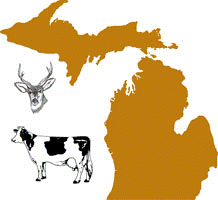Wildlife Disease and Zoonotics
Date of this Version
7-11-2006
Abstract
Feral hogs or “wild boars” come from several sources and include released or escaped domestic swine and the truly wild European boar. When free-roaming in North America, all are included in the term “feral swine,” as are hybrids of the two types. Although morphologically distinct, both the feral swine and European wild swine are recognized as Sus scrofa. The physical damage caused by feral swine has been well documented and includes damage to vehicles, vineyards, tree plantings, archaeological sites, agricultural crops, turf, soils, rare plant communities, and wildlife habitat (Seward et al. 2004). In addition they compete with livestock and native wildlife for food resources; prey on domestic animals and wildlife; and carry diseases that affect pets, livestock, wildlife and people (Seward et al. 2004). Texas, the state with the largest feral hog population, reports the annual damage to agriculture at $51.8 million (Adams et al. 2005). The total damage caused by feral swine in the United States is estimated to be approximately $800 million annually (Pimentel et al. 2000). This estimate is approximate, and probably conservative, because environmental damage costs attributable to feral swine are not easily quantified nor are the costs of potential disease outbreaks.



Comments
Published for Midwest Association of Fish and Wildlife Agencies.